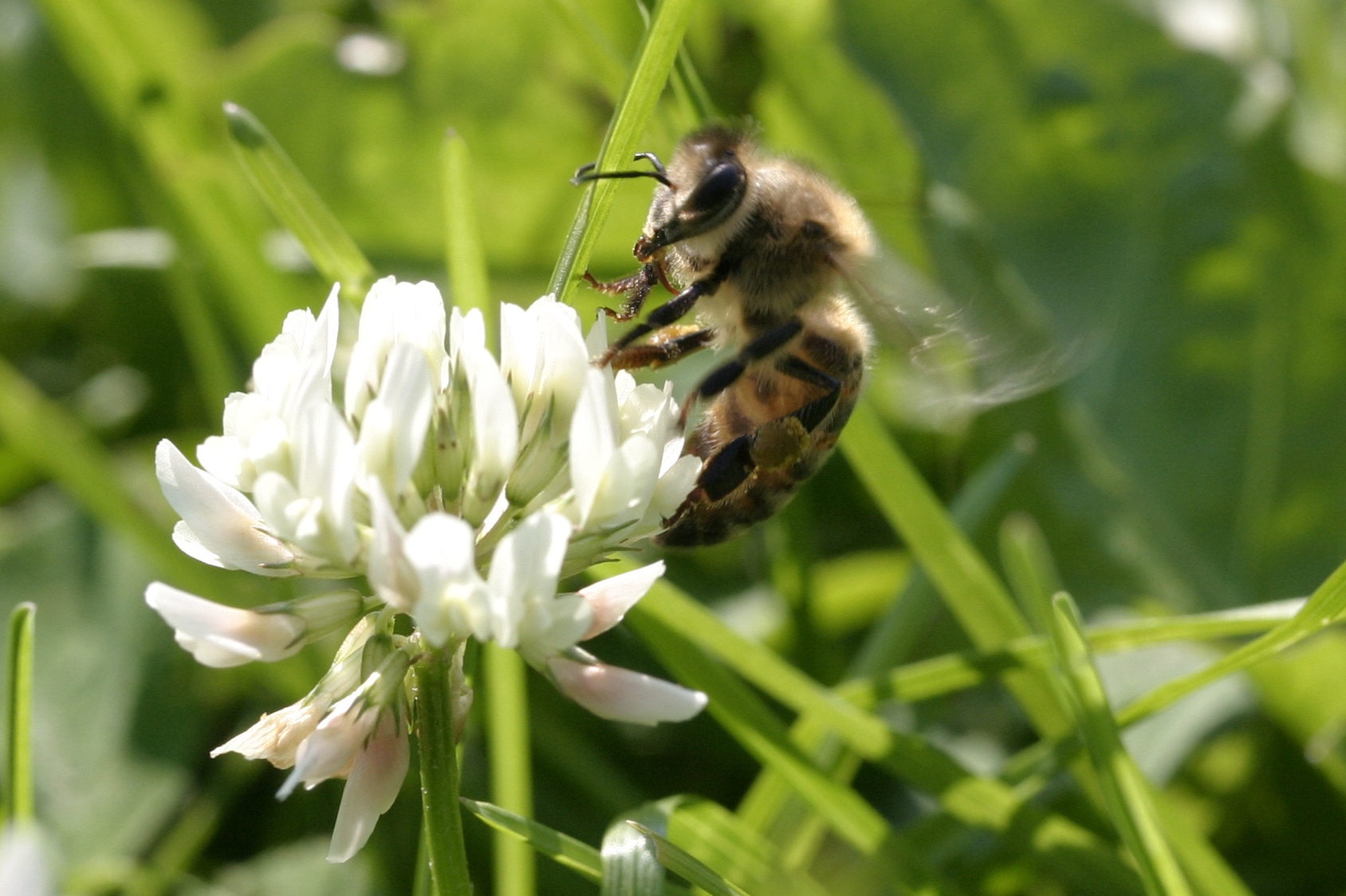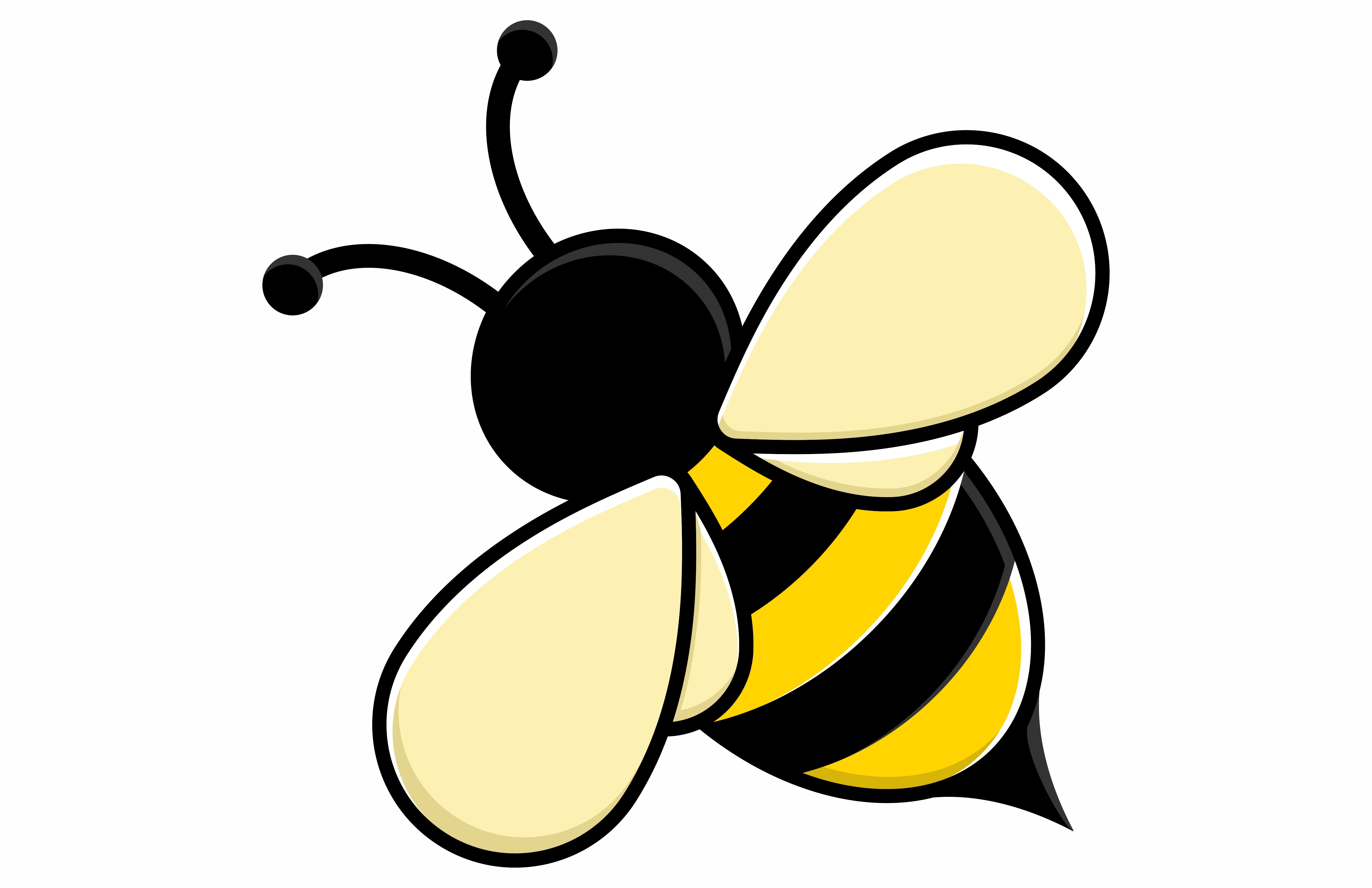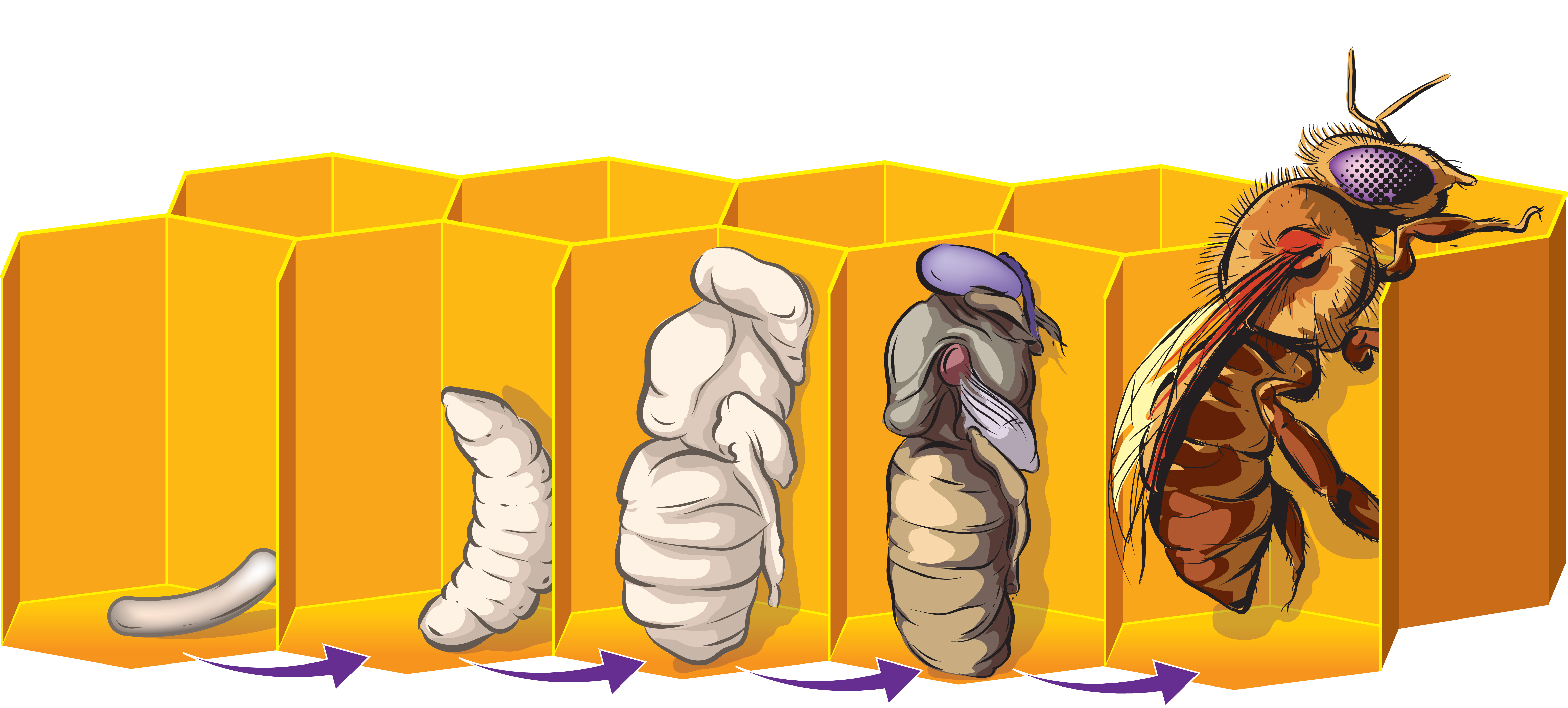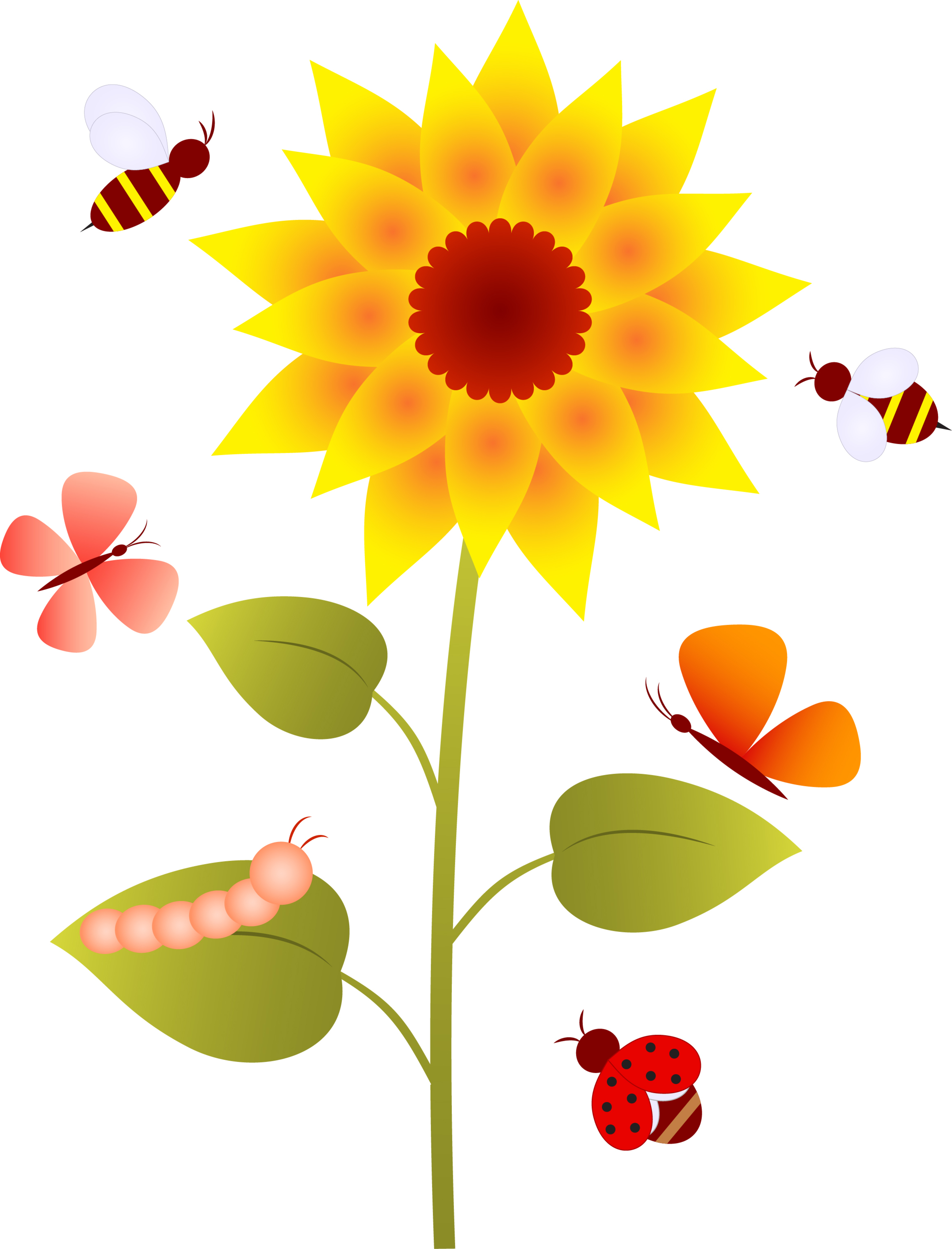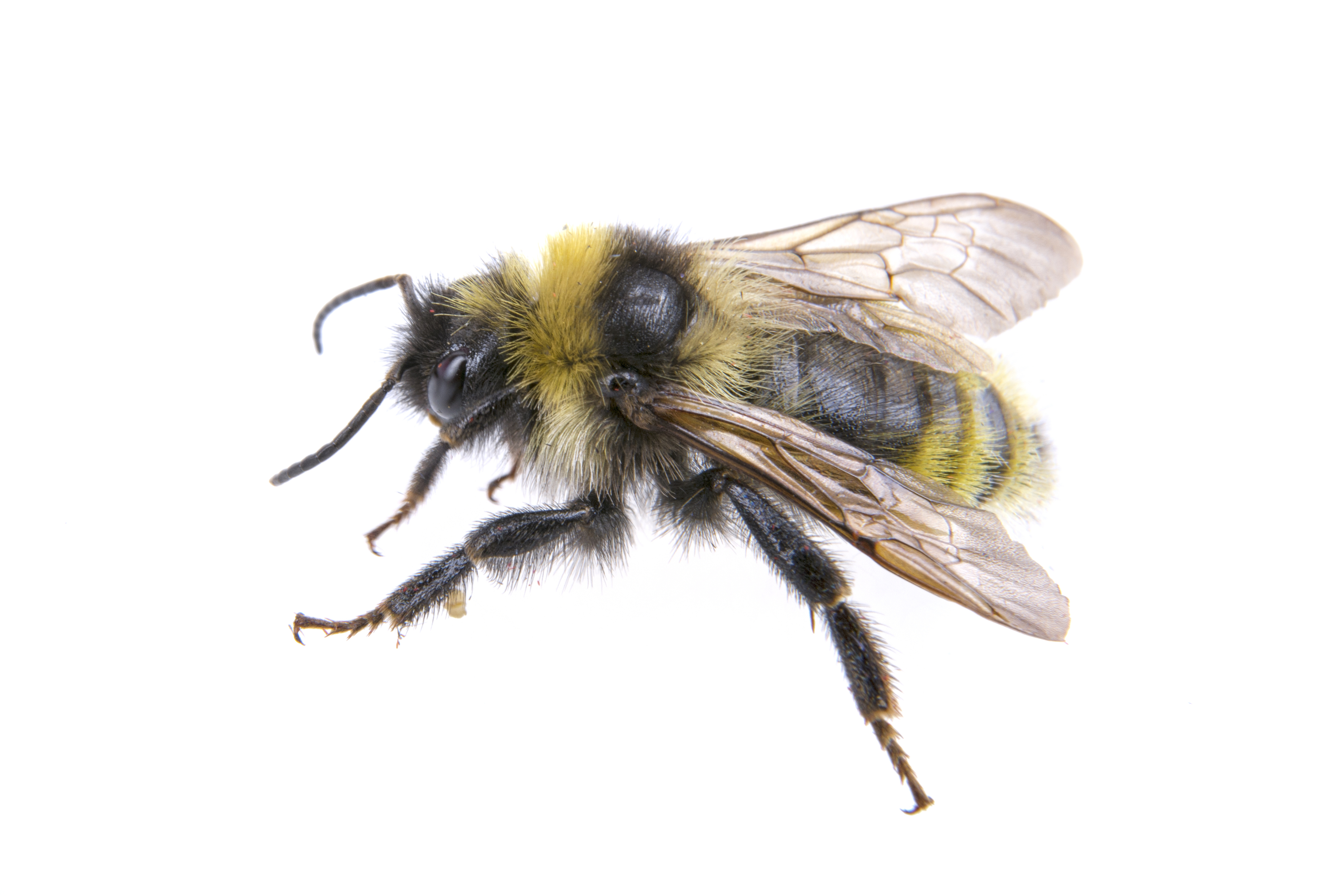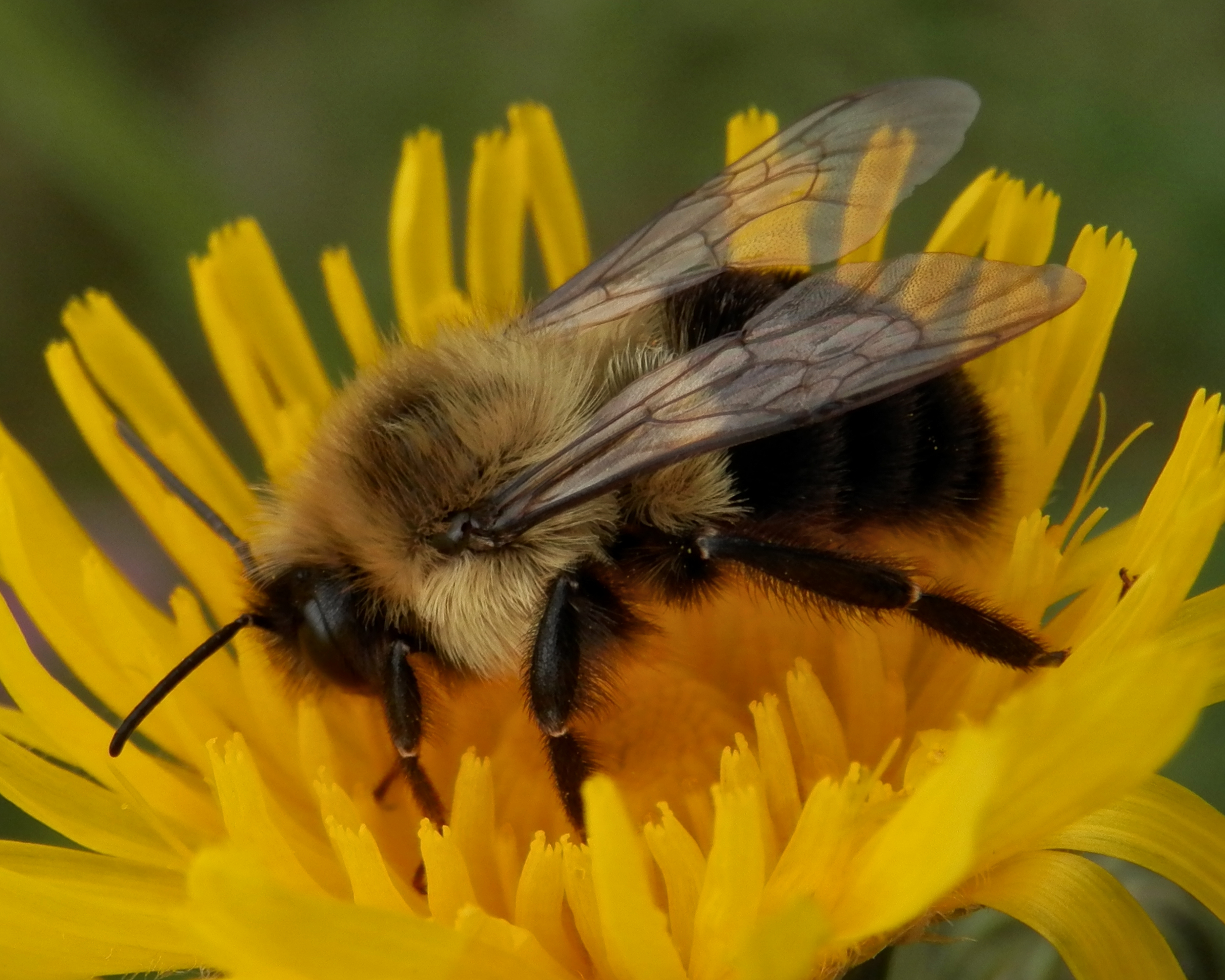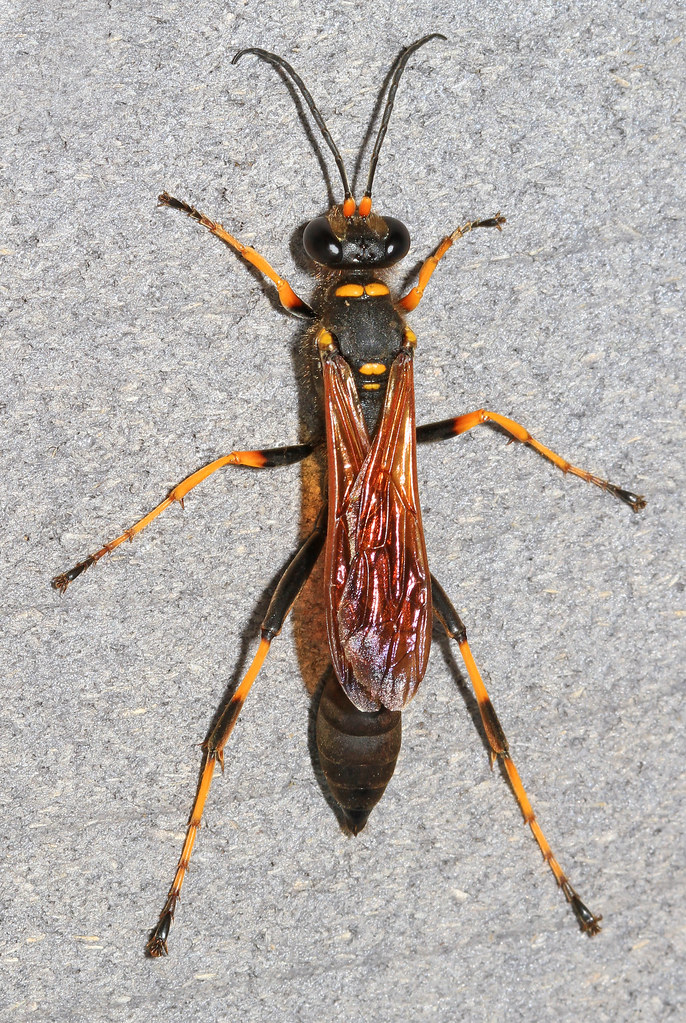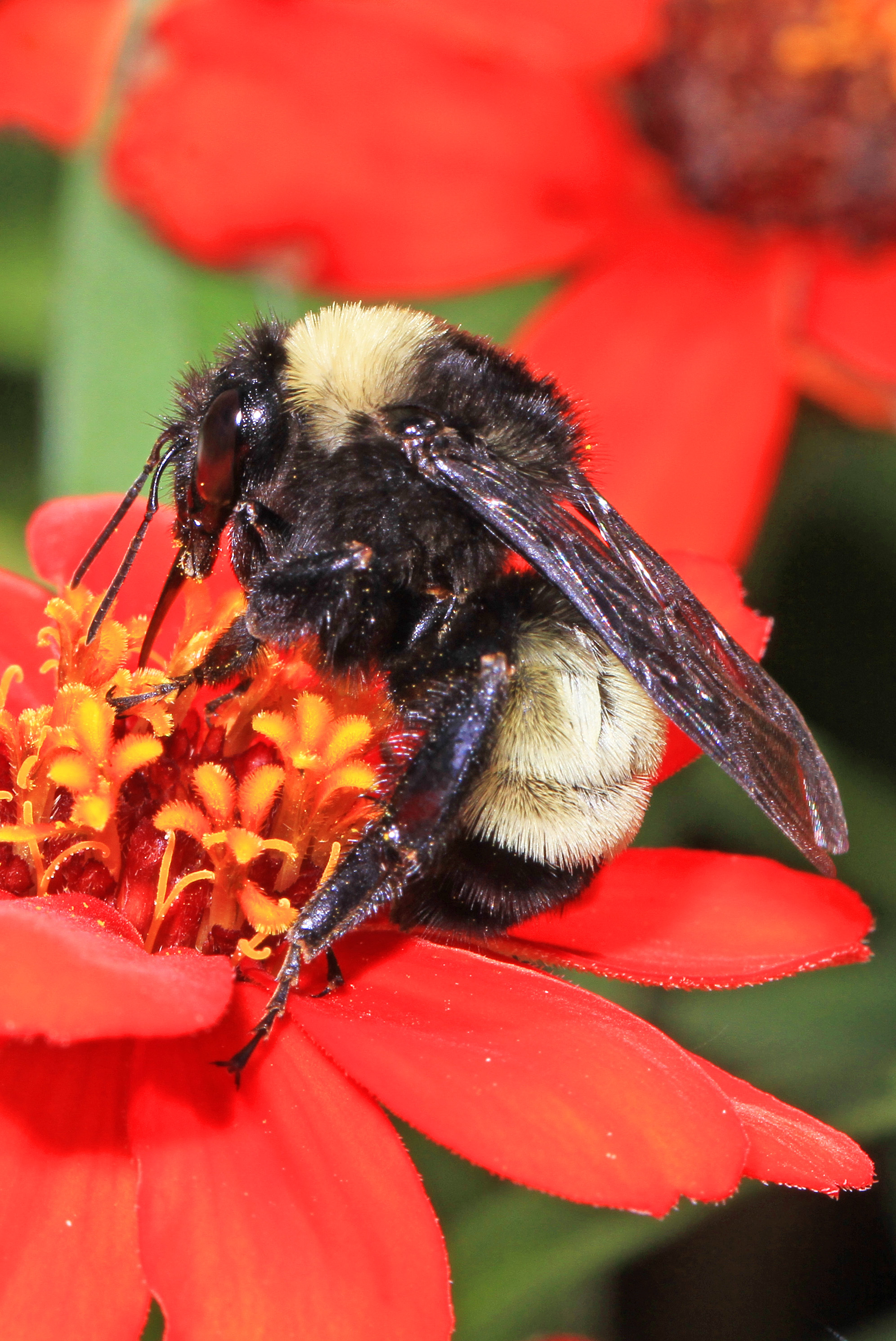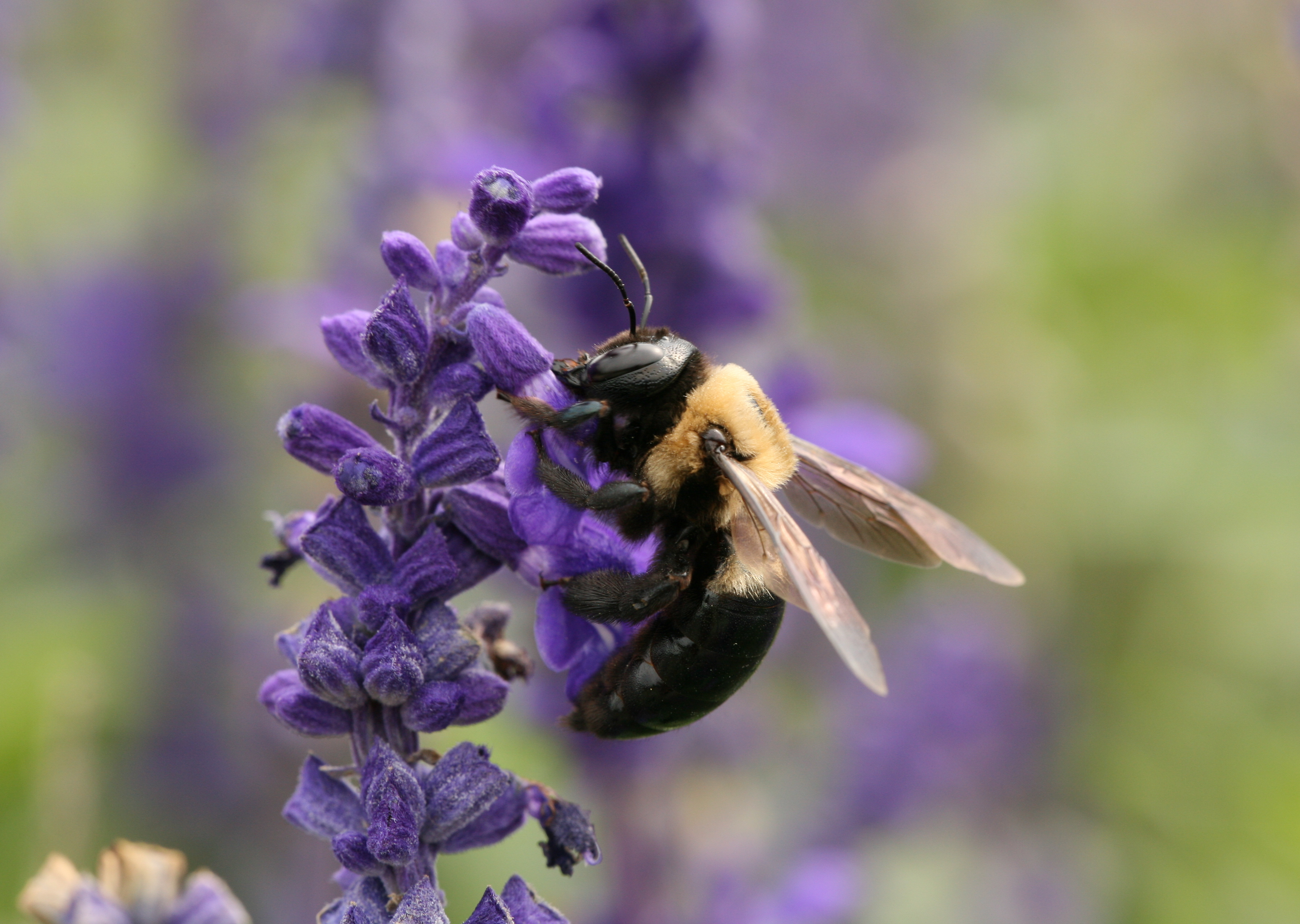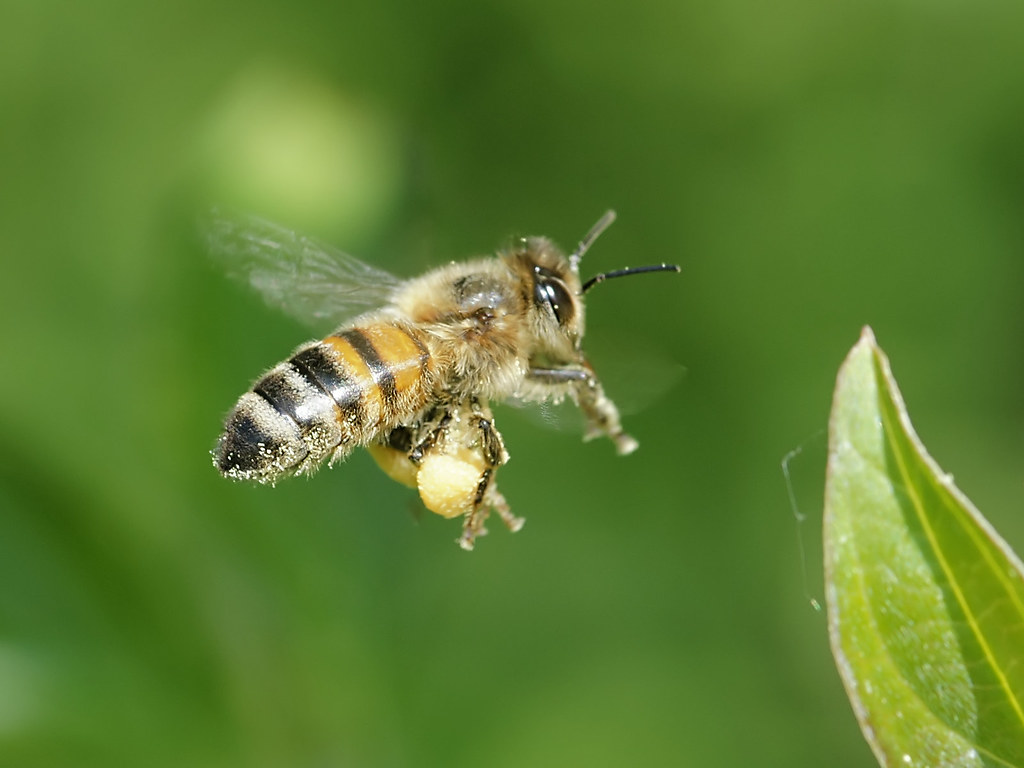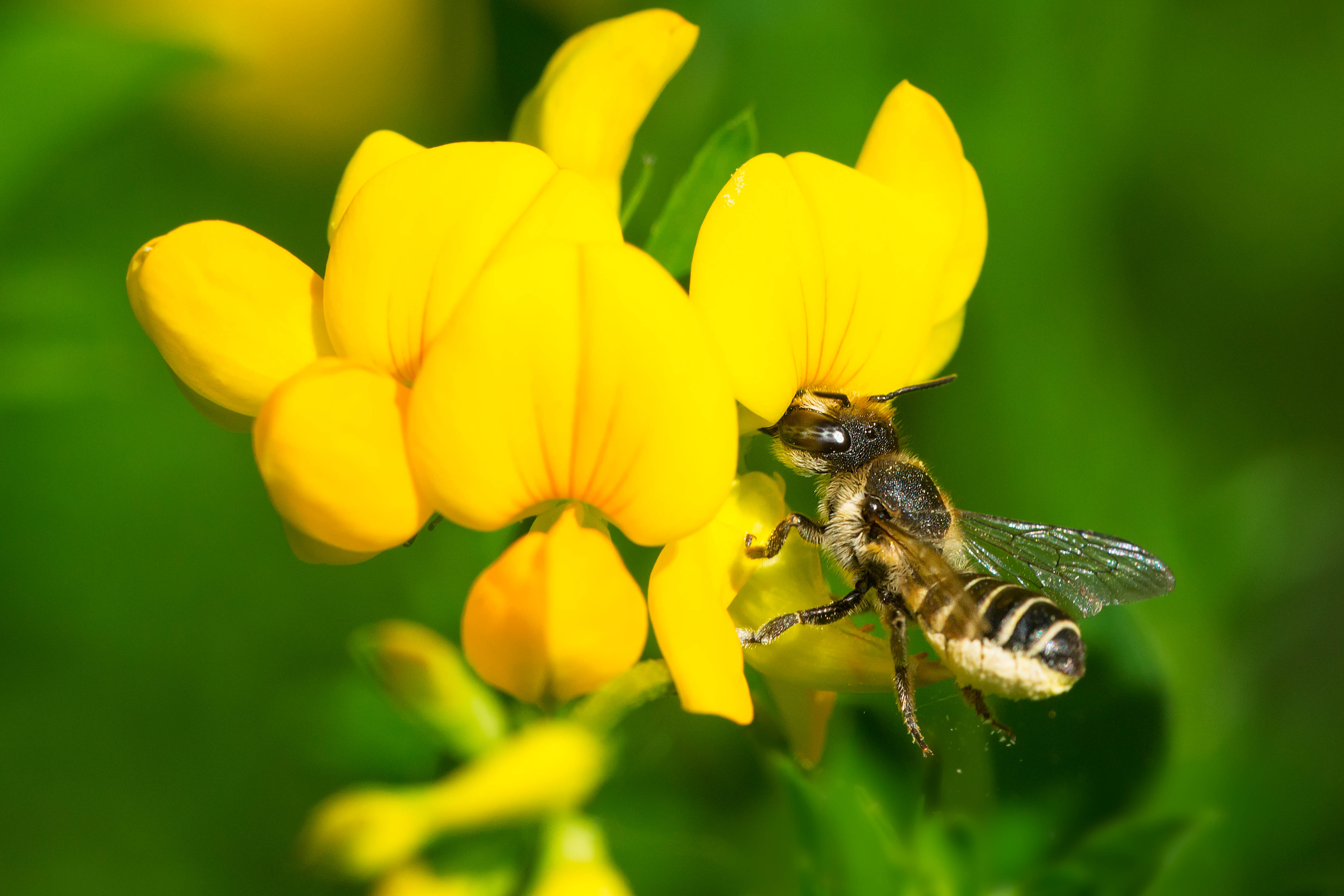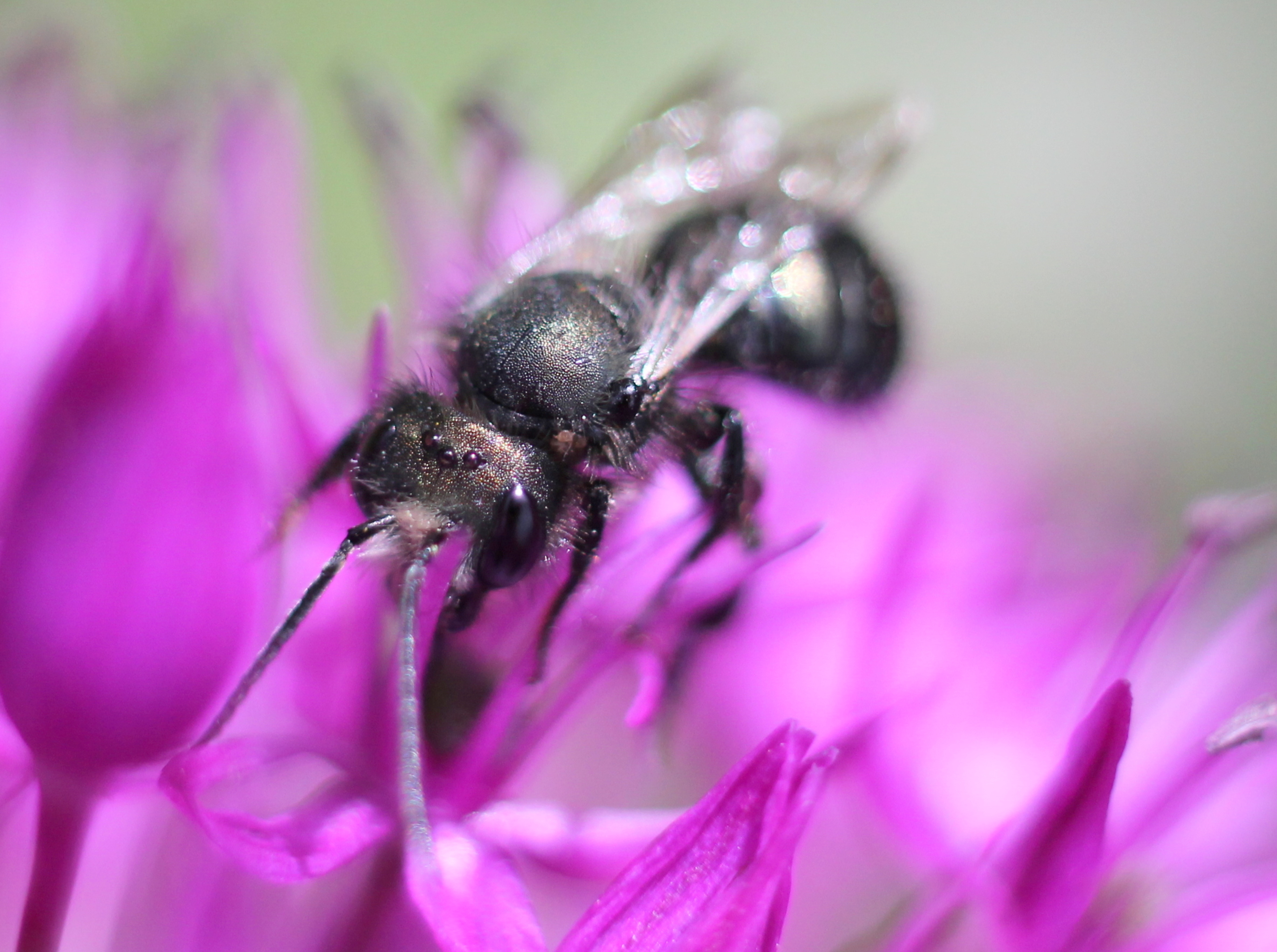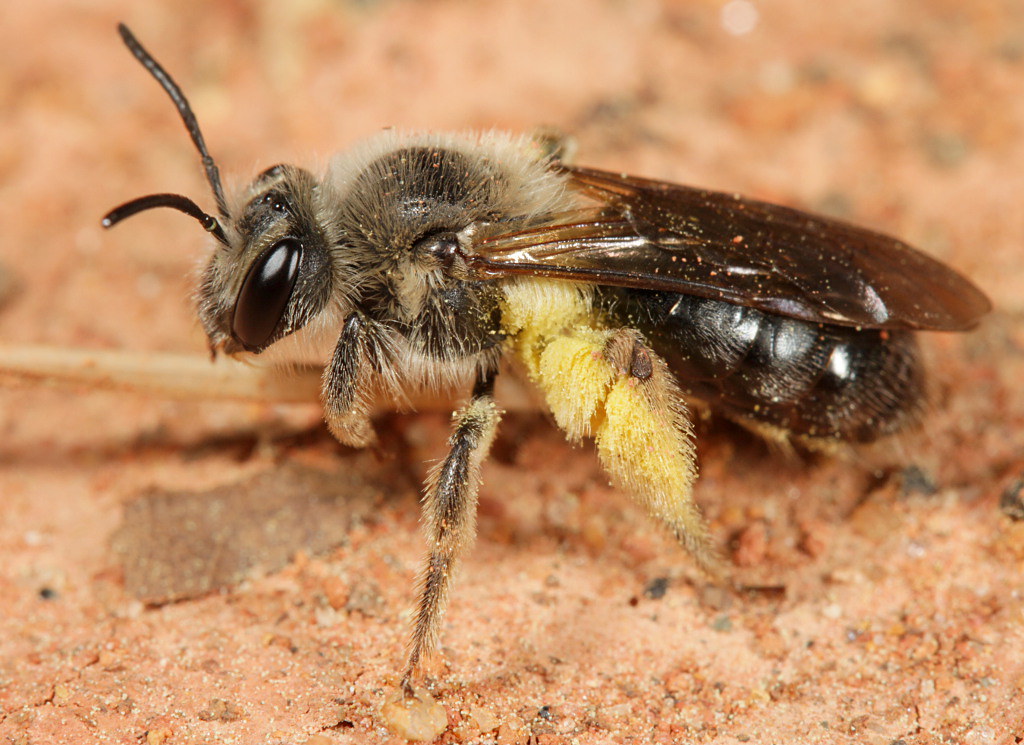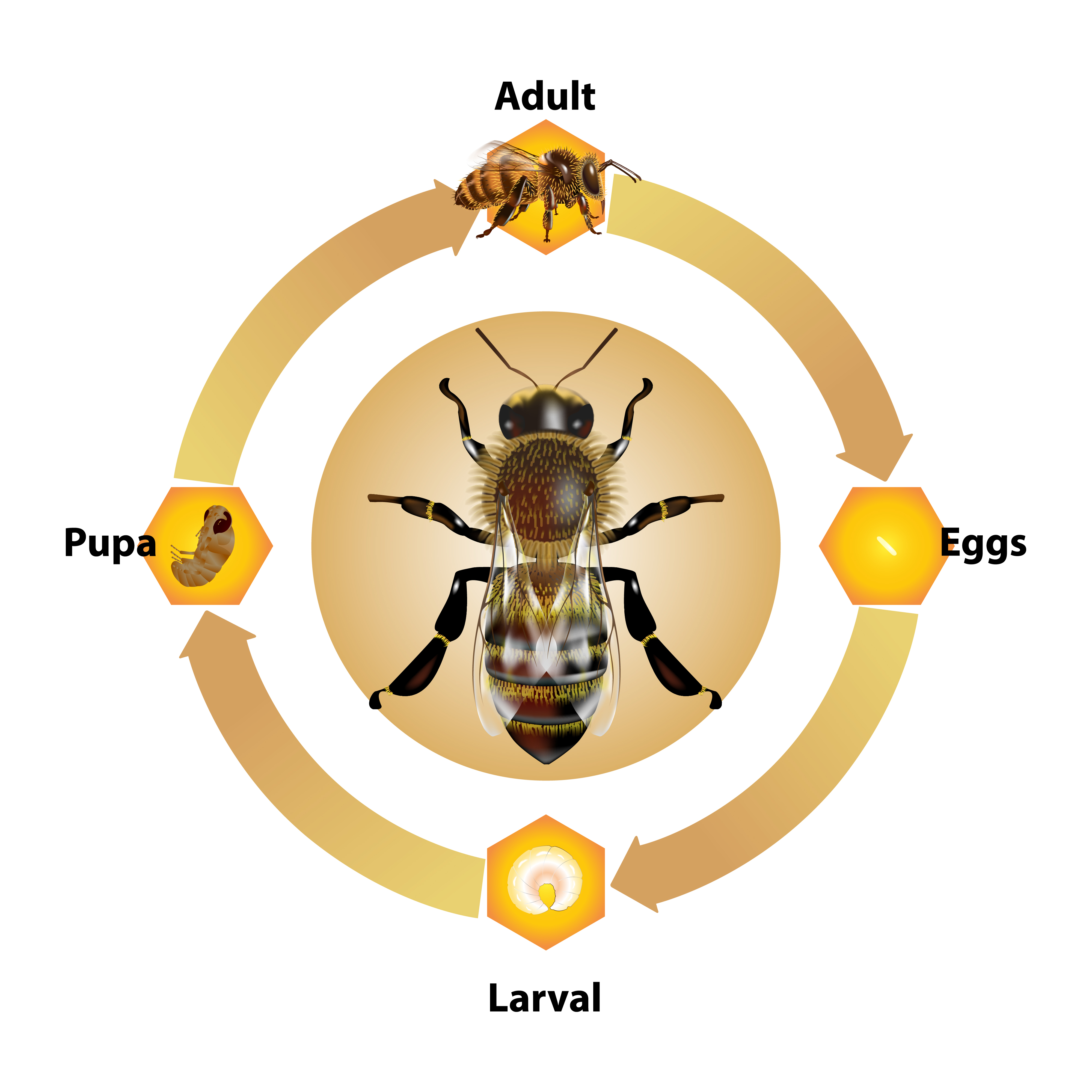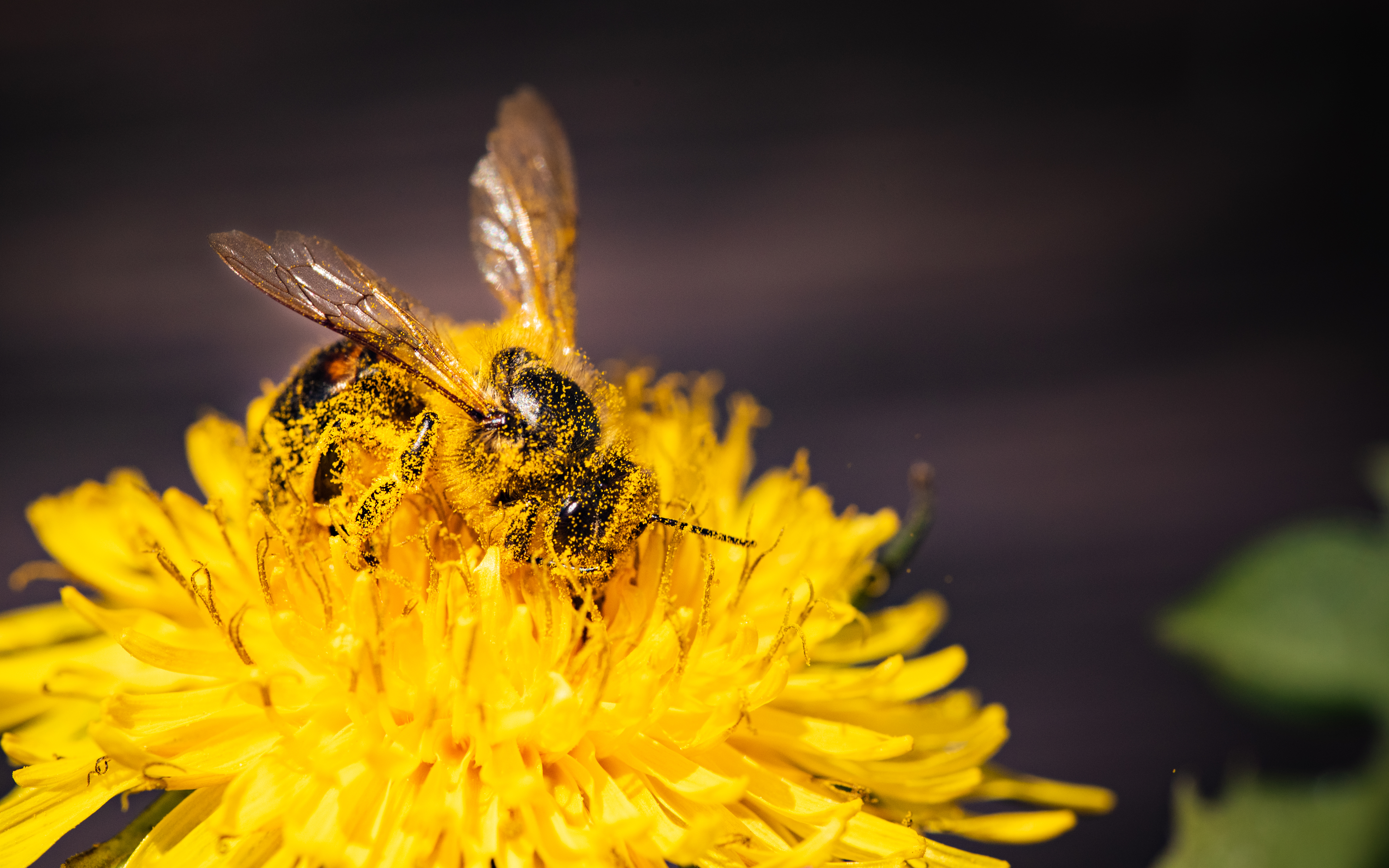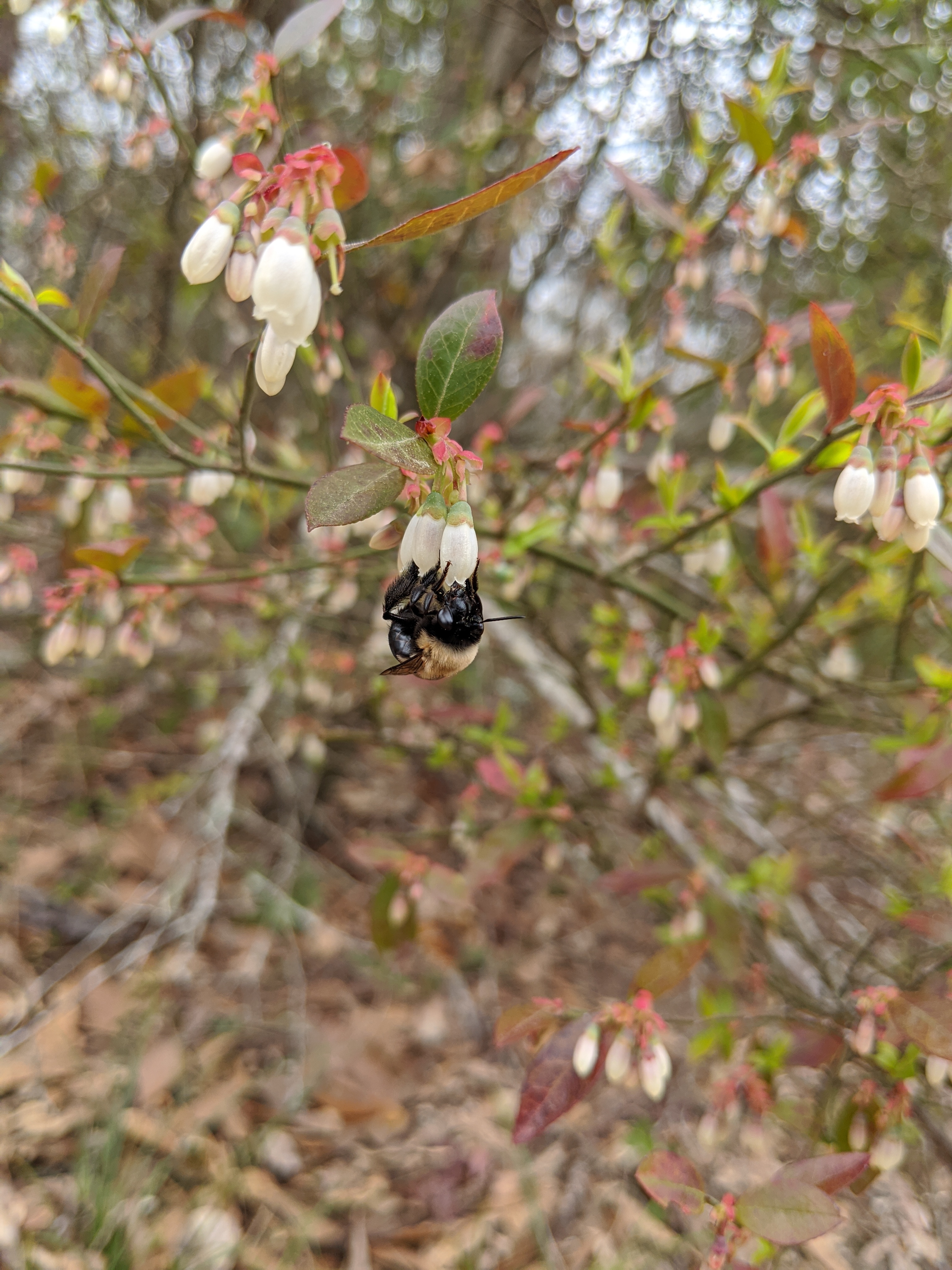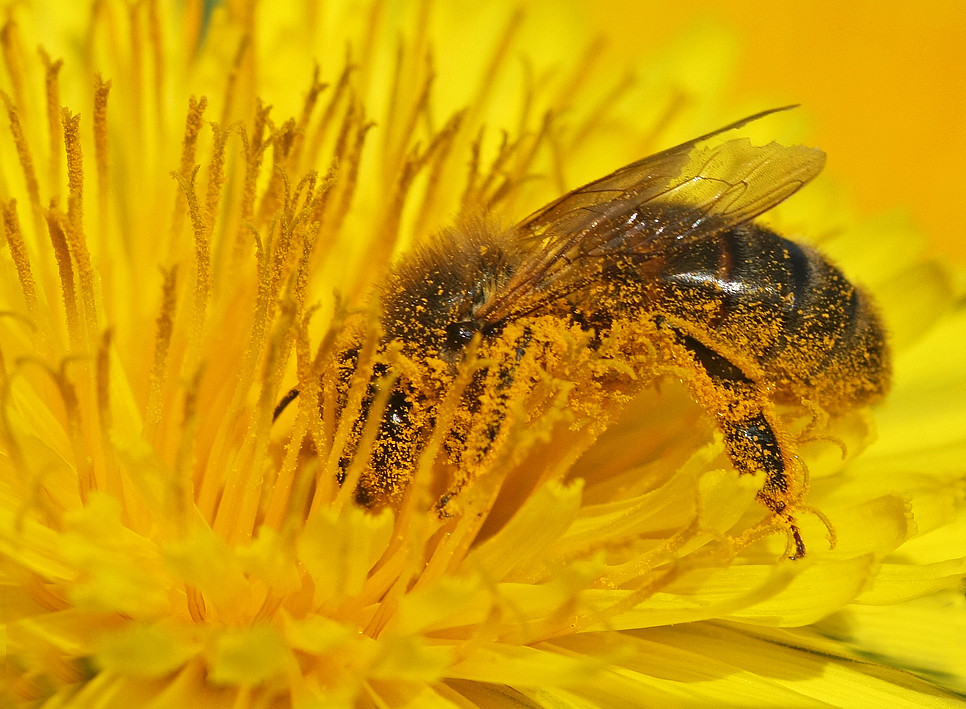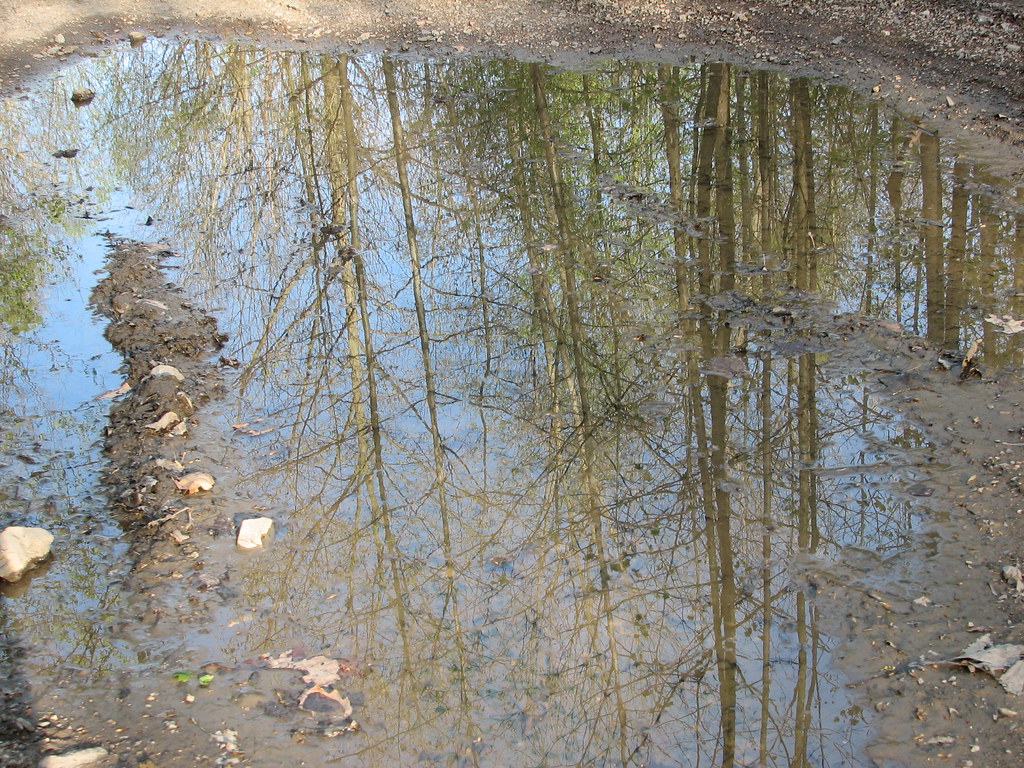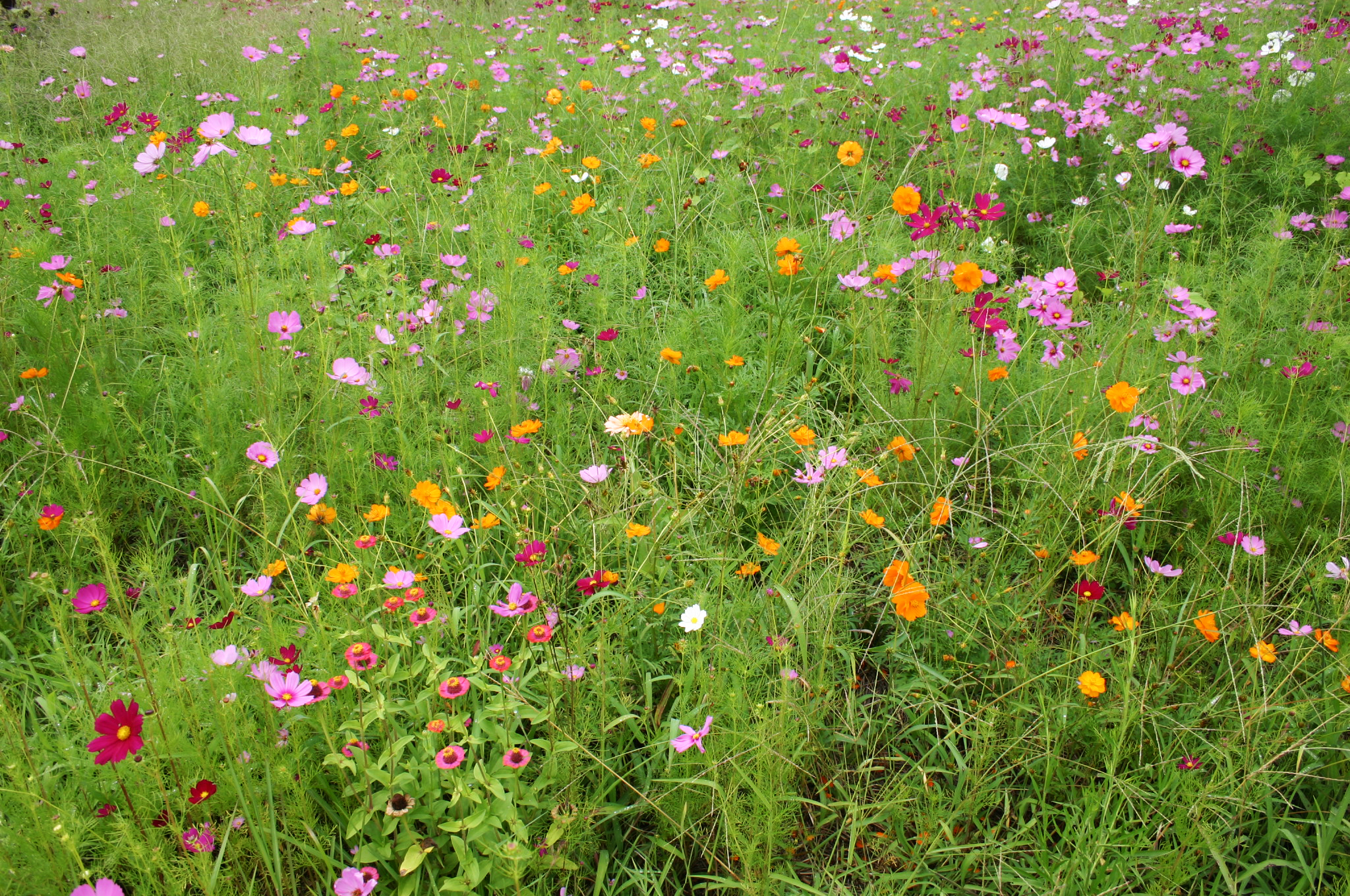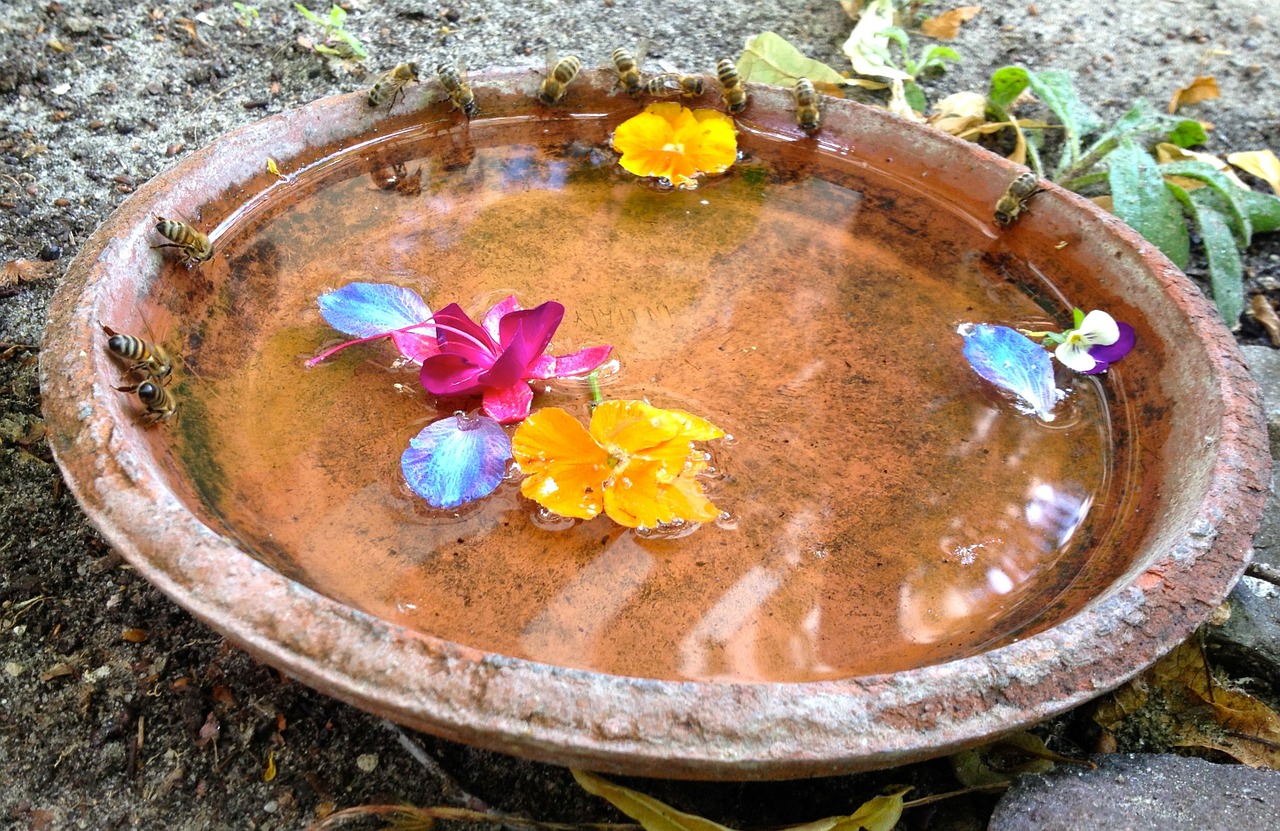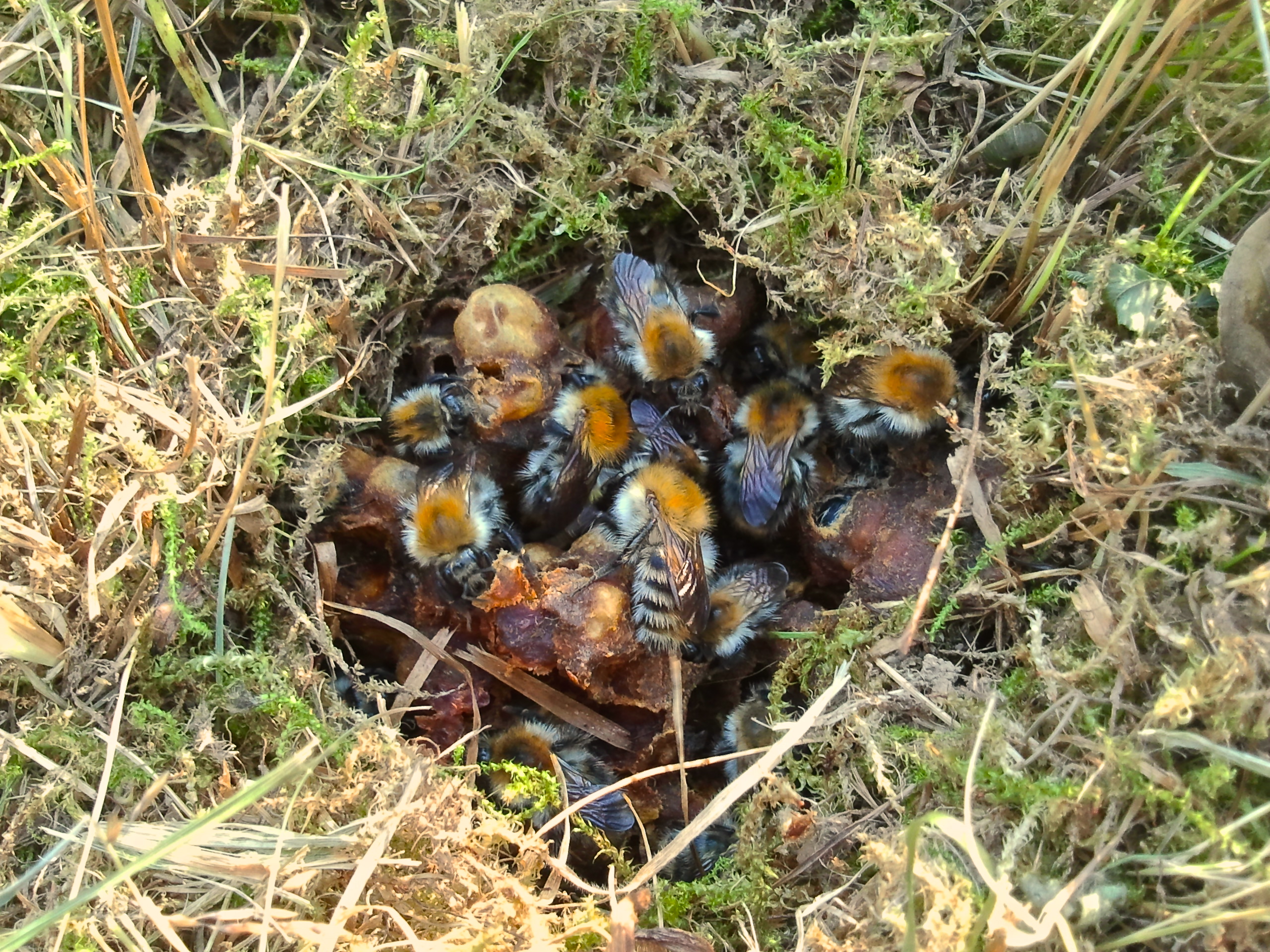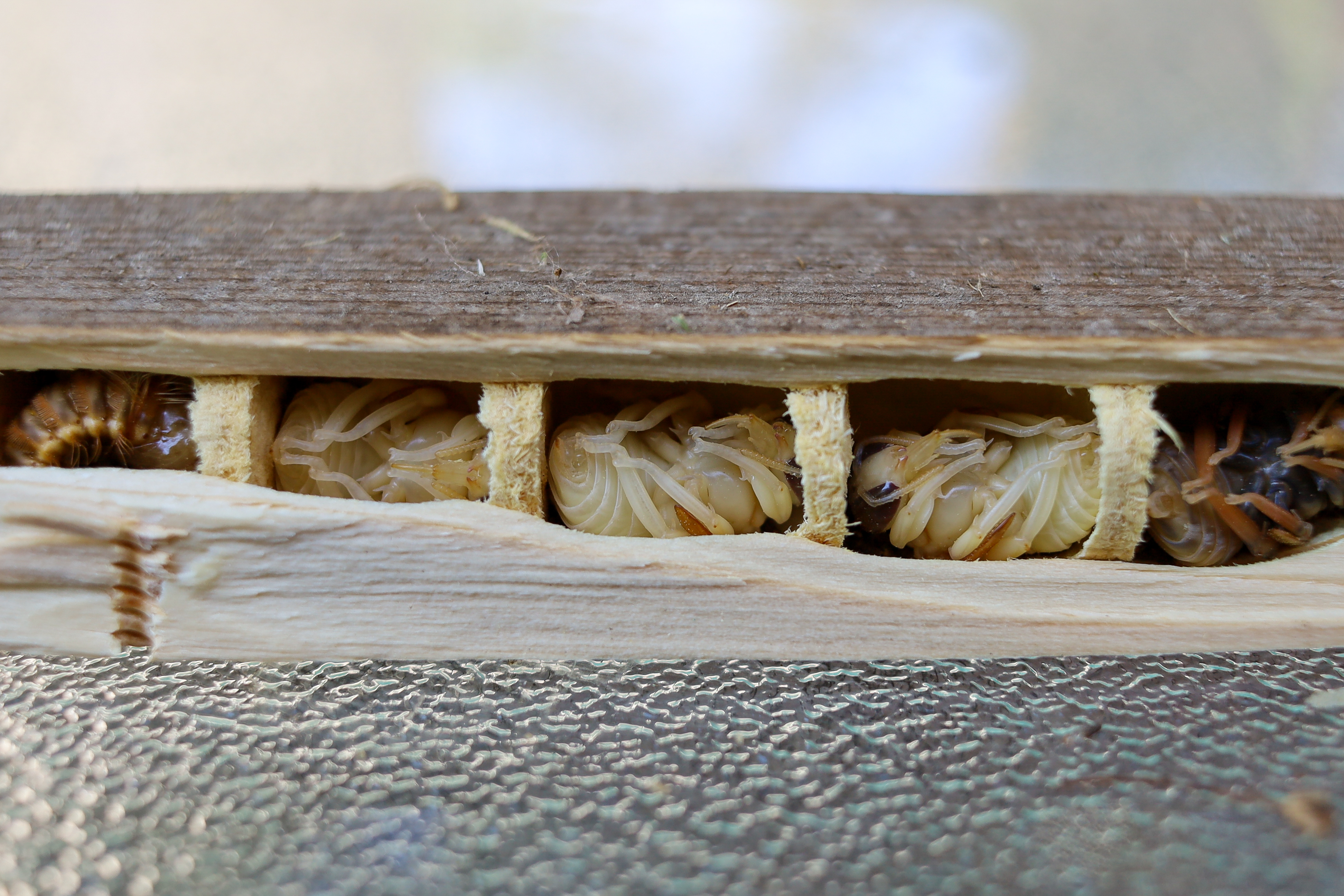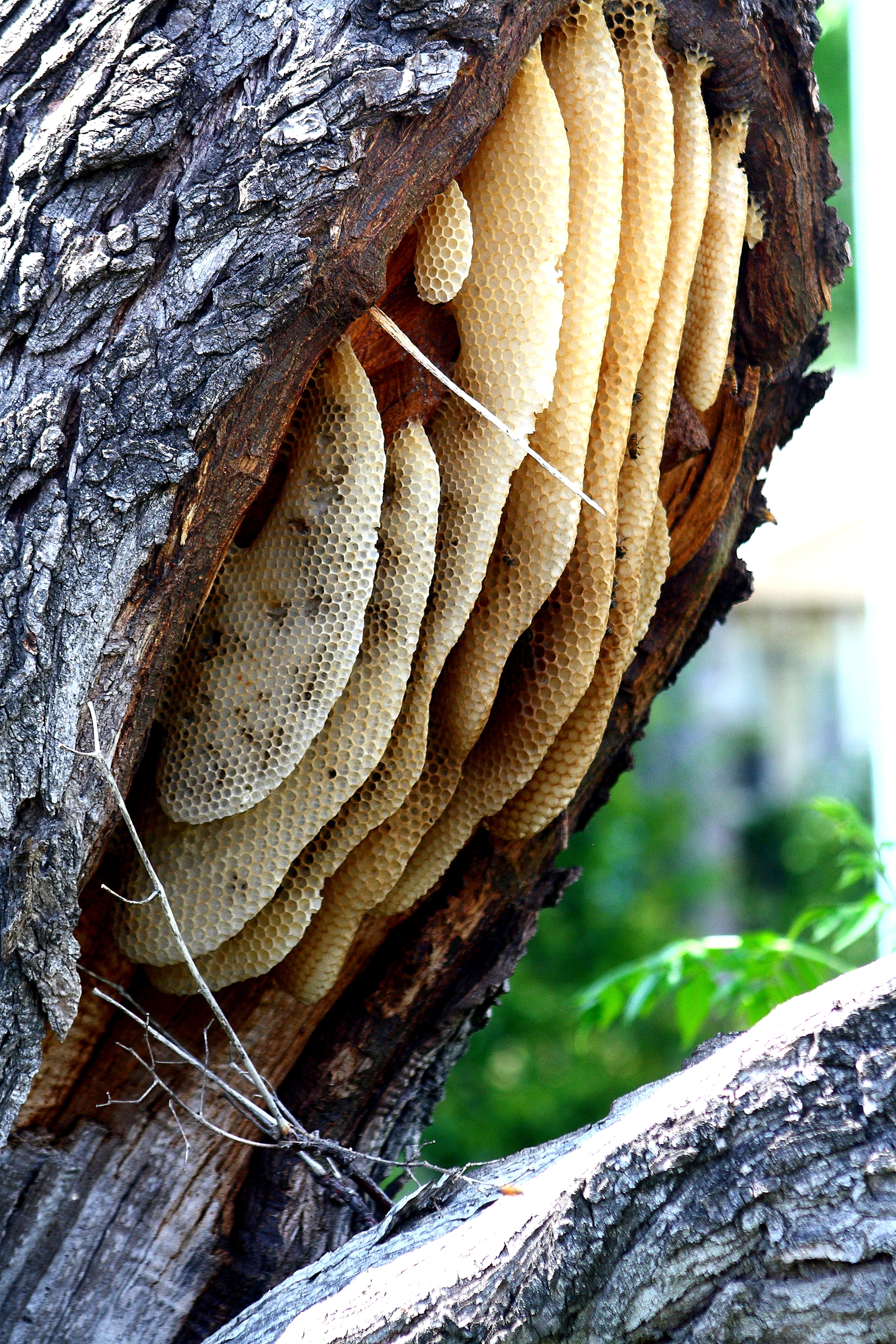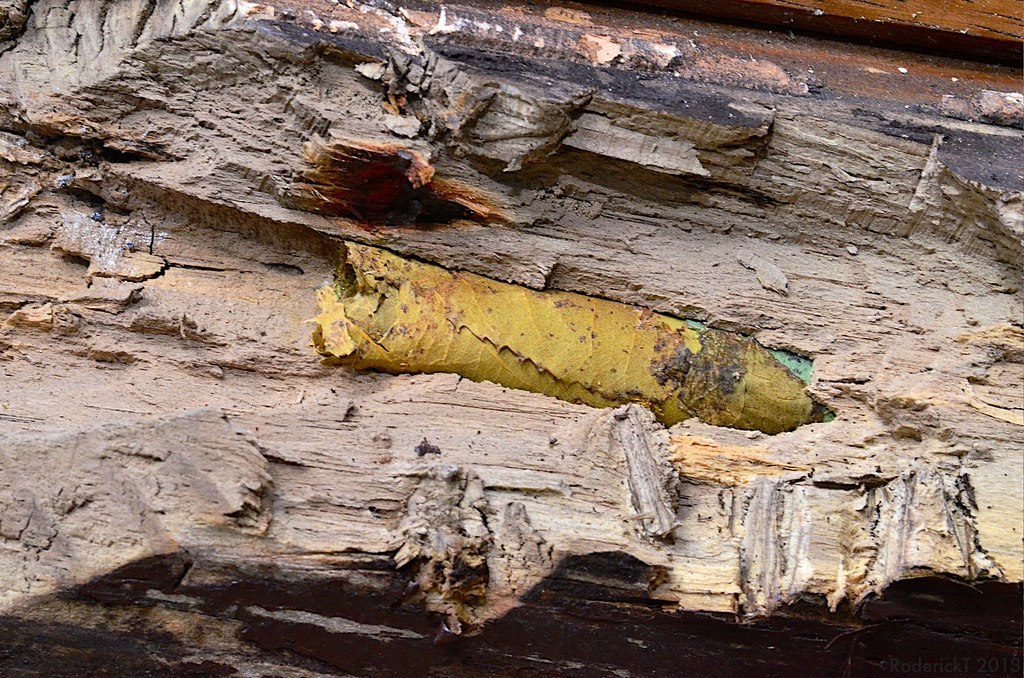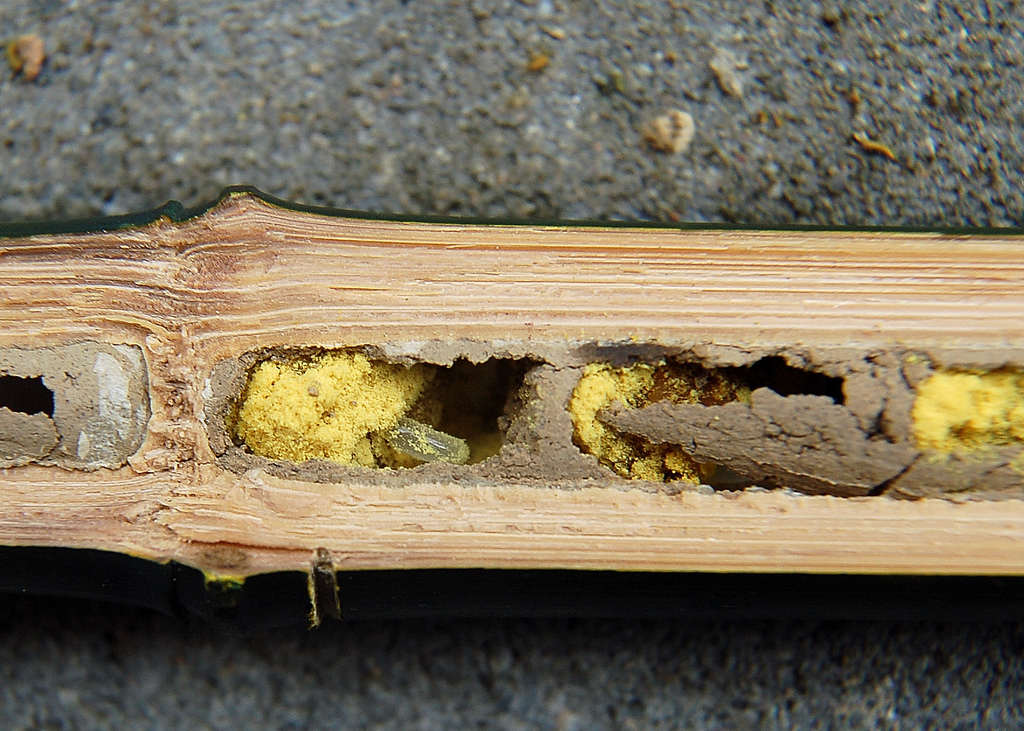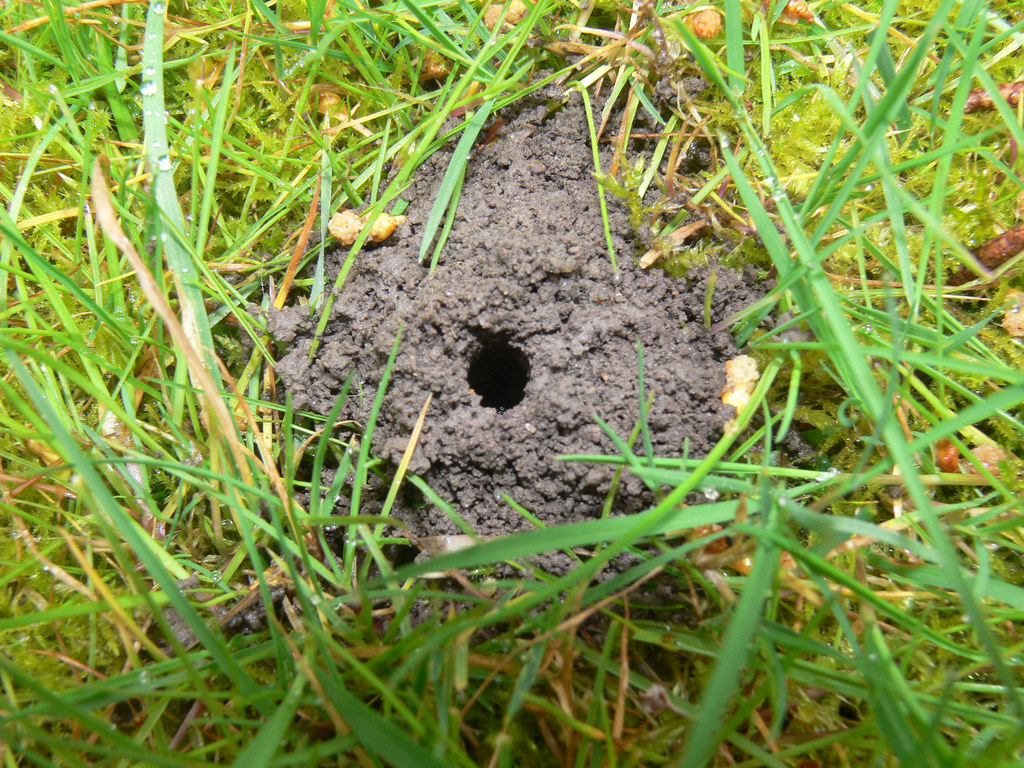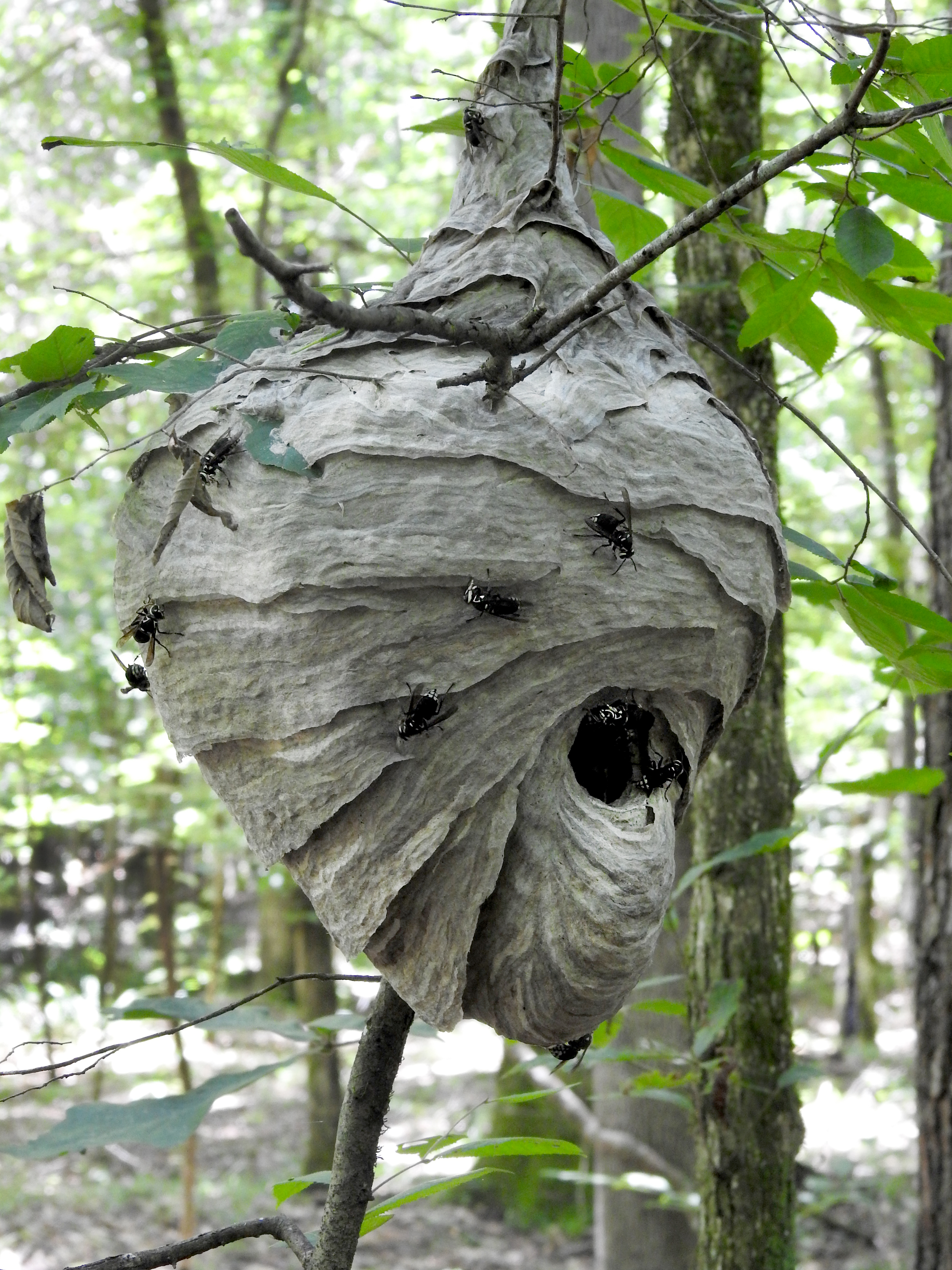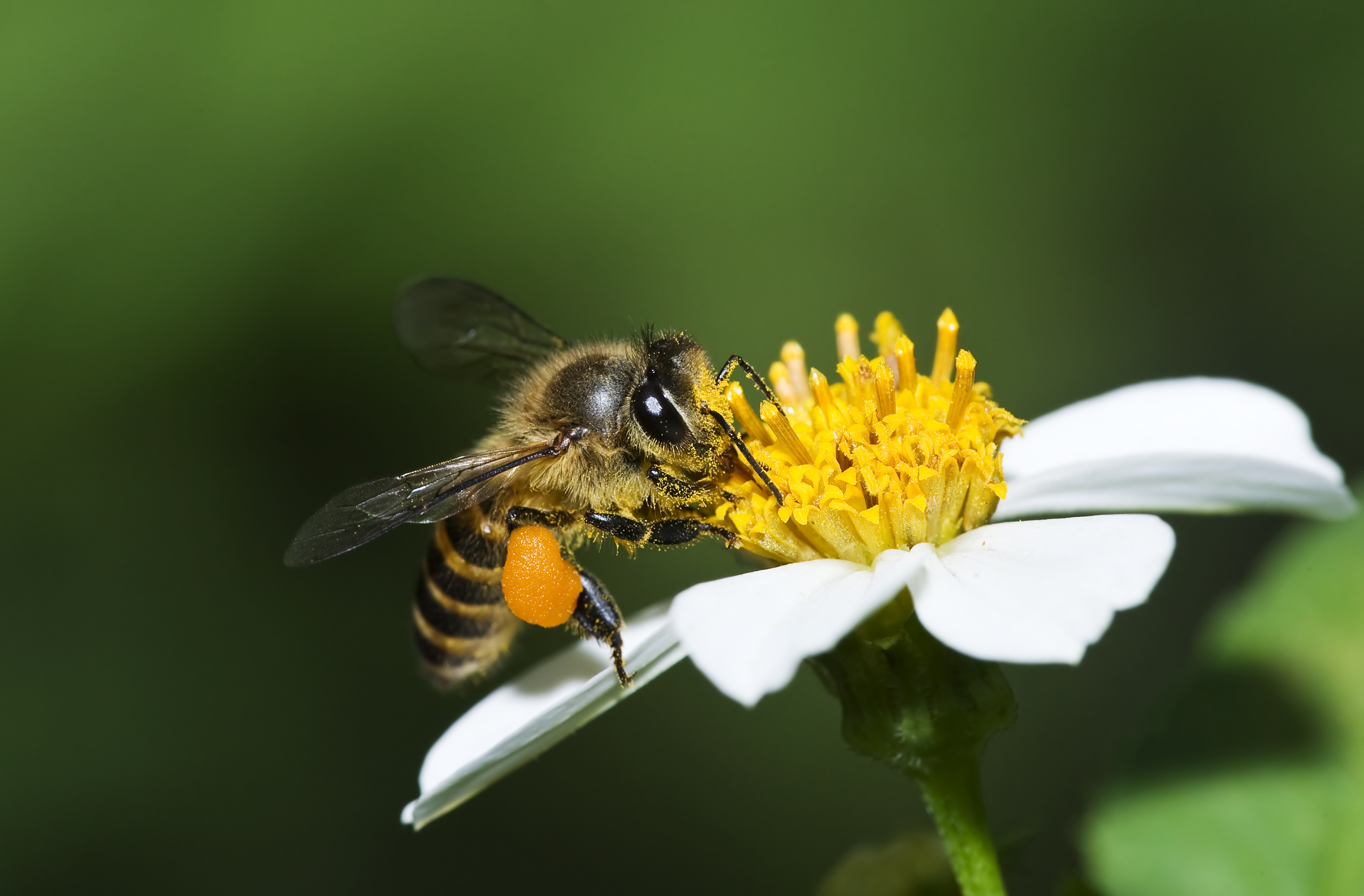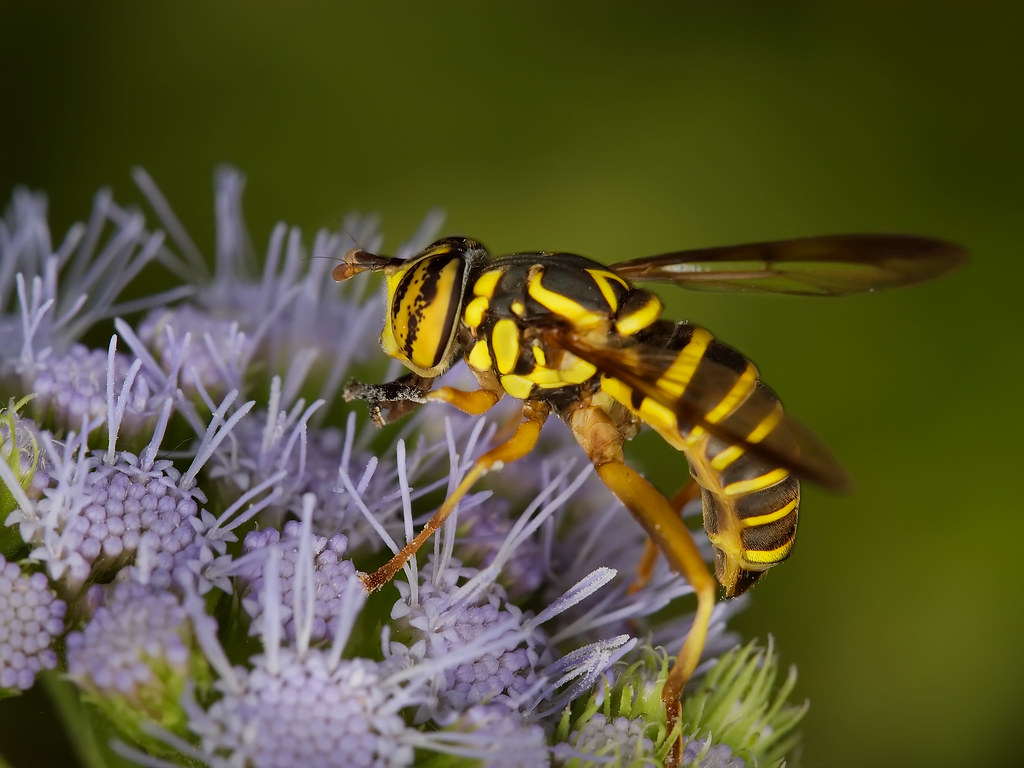Upper Grades Ecosystem Investigation: Bee Habitat
 Investigate Bees and Their Habitat
Investigate Bees and Their Habitat| Bee on Clover Flower Wikimedia - Radu Privantu Click on image to enlarge it |
There are over 20,000 species of bees in the world, and 4,000 of these species can be found in North America. Bees play an important role in our ecosystems, and your outdoor classroom can help support them by providing habitat including food, water, shelter, and a place to raise their young.
| Click on the topics below to learn more! | ||||
| Characteristics and Types | Life Cycle | Ecological Role | Habitat Needs | Interesting Facts |
| Differences between bees and wasps: | |
Although bees and wasps are classified in a group together and share many similarities, there are ways to tell them apart from one another.
|
|
|
Eastern Bumble Bee Wikimedia - Ryan Hodnett Click on image to enlarge it |
Black and Yellow Mud Dauber Flickr - Judy Gallagher Click on image to enlarge it |
| There are around 4,000 species (types) of bees that can be found in North America. Some of them are recognizable and easily identified while many of them are solitary (live alone) and smaller than a grain of rice. | ||
| Common Types of Bees: |
||
| Bumble | Carpenter | Honey |
|
American Bumble Bee Wikimedia - Judy Gallagher Click on image to enlarge it |
Carpenter Bee Wikimedia - Daniel Schwen Click on image to enlarge it |
Honey Bee flickr - Hans Hillewaert Click on image to enlarge it |
|
|
|
| Leafcutter | Mason | Miner |
|
Leafcutter Bee Dreamstime Click on image to enlarge it |
Mason Bee Dreamstime Click on image to enlarge it |
Mining Bee Dreamstime Click on image to enlarge it |
|
|
|
| Ecological Role | ||
| Bees are an important pollinator for a wide variety of native flowering plants. Pollen contained within flowering plants is a source of nutrients and protein for bees and their offspring. When adult bees visit flowers to search for pollen and nectar, pollen becomes trapped in the hairs on their bodies. As a bee moves from flower to flower, pollen from one flower that has been captured in the bee's hairs gets deposited on another flower. To learn more about pollination, visit the Alabama Wildlife Federation's Pollinators and their Habitats webpage! |
Bee Covered in Pollen
Dreamstime Click on image to enlarge it |
|
| Bees also play a major role in pollinating many of the agricultural crops in the United States. Approximately 75% of the fruits, vegetables, and nuts grow in the United States depend on bee pollination. |
Southern Blueberry Bee on Blueberry Flower
Dreamstime Click on image to enlarge it |
|
| Some bees, including bumble bees, can do a special type of pollination, called buzz pollination. During buzz pollination, larger bees with wings that can vibrate quickly cause the flower to vibrate. The vibration releases pollen that would not have released if the flower was not shaken. Some plants, including tomatoes, eggplants, pumpkins, cranberries, and blueberries, require this type of pollination. Honey bees cannot perform buzz pollination and are therefore ineffective pollinators of these types of plants. | ||
| Some native bee species are declining in number due loss of habitat and pesticide use. It is important to provide habitats for them because they play an important role in their habitat and help pollinate some of our food sources. | ||
|
||
| Habitat Needs | ||
| Bees require a habitat that provides food, water, shelter, and a place to raise their young. | ||
| Food: | ||
Bees get the energy they need from consuming pollen and nectar provided in flowering plants. Pollen is high in protein and nutrients, and nectar provides the bee with sugars. These resources are also used for feeding the developing young.
Click on the flowers to see the plant species commonly found in outdoor classroom pollinator gardens!
|
Bee Feeding on Dandelion Pollen
flickr - nutmeg66 Click on image to enlarge it |
|
| Water: | ||
| Bees require a source of freshwater from which they can drink. They often drink from puddles on the ground, shallow bird baths, or other sources of shallow standing water. These sources of water provide additional minerals and nutrients for bees. |
Shallow Mud Puddle
flickr - daveynin Click on image to enlarge it |
|
| Shelter: | ||
| Bees require shelter to escape harsh weather, avoid predators, and for a place to nest. If a bee cannot make it back to its nest, it may take shelter under vegetation or in cracks within tree bark or a log. | ||
| Places to Raise Young: Different types of bees build different types of nests where they raise their young. Some bees are solitary (live alone) while others life in colonies with complex social systems. The majority of bee species live in the ground, while only 30% build nests/hives above ground. Bees go through a complete metamorphosis (a series of physical changes that occur as an organism develops) with an egg, larva, pupa, and adult stage. The nest provides bees for a safe place to raise and nourish their young. In most nests, bees create chambers, and in each chamber they will lay an egg and provide a mixture of nectar, pollen, and saliva for the young to feed on. |
|
|
| Supporting Bees in your Backyard Habitat: | ||
| Plant a variety of native (originally from the area; not introduced by humans) flowering plants that bloom at different times throughout the year to provide a constant source of food for bees. Some bees will consume pollen from a variety of flowers while other bees are more specialized and only consume pollen from specific types of plants. Having a variety of plants that bloom at different times can also help support a wider variety of beess. To learn more about native plants, visit the Alabama Wildlife Federation's LSI: Native Plants webpage! Use a non-chemical solution rather than pesticides to control unwanted insects. If a pesticide is necessary, do not apply the pesticide when pollinators are active, and avoid applying the pesticide to the flowers where the pollinators feed. Provide a source of water such as a puddling station or a shallow bird bath. Leave tree snags, fallen leaves, and a bare patch of soil for bees to use as nesting sites. |
Mixed Wildflowers
Wikimedia - Alabama Extension Click on image to enlarge it |
|
| Common Types of Bee Nests: | |||
| Bumble | Carpenter | Honey | |
|
Bumblebee Nest
Wikimedia - Panoramedia Click on image to enlarge it |
Carpenter Bee Nest
Wikimedia - A. Thom Wolf Click on image to enlarge it |
Honey Bee Nest
Dreamstime Click on image to enlarge it |
|
|
|
|
|
| Leafcutter | Mason | Miner | |
|
Leafcutter Bee Nest
flickr - rodtuk Click on image to enlarge it |
Mason Bee Nest
Wikimedia - tpjunier Click on image to enlarge it |
Miner Bee Nest
flickr - bramblejungle Click on image to enlarge it |
|
|
|
|
|
|
Paper Wasp Nest Dreamstime Click on image to enlarge it |
||
SOURCES USED FOR THIS PAGE
 |
 |
|
|
|
|
|
 |
|
|
 |
|
|
| Bee Basics An Introcudtion to our Native Bees |
||
 Wildlife Tag
Wildlife Tag
